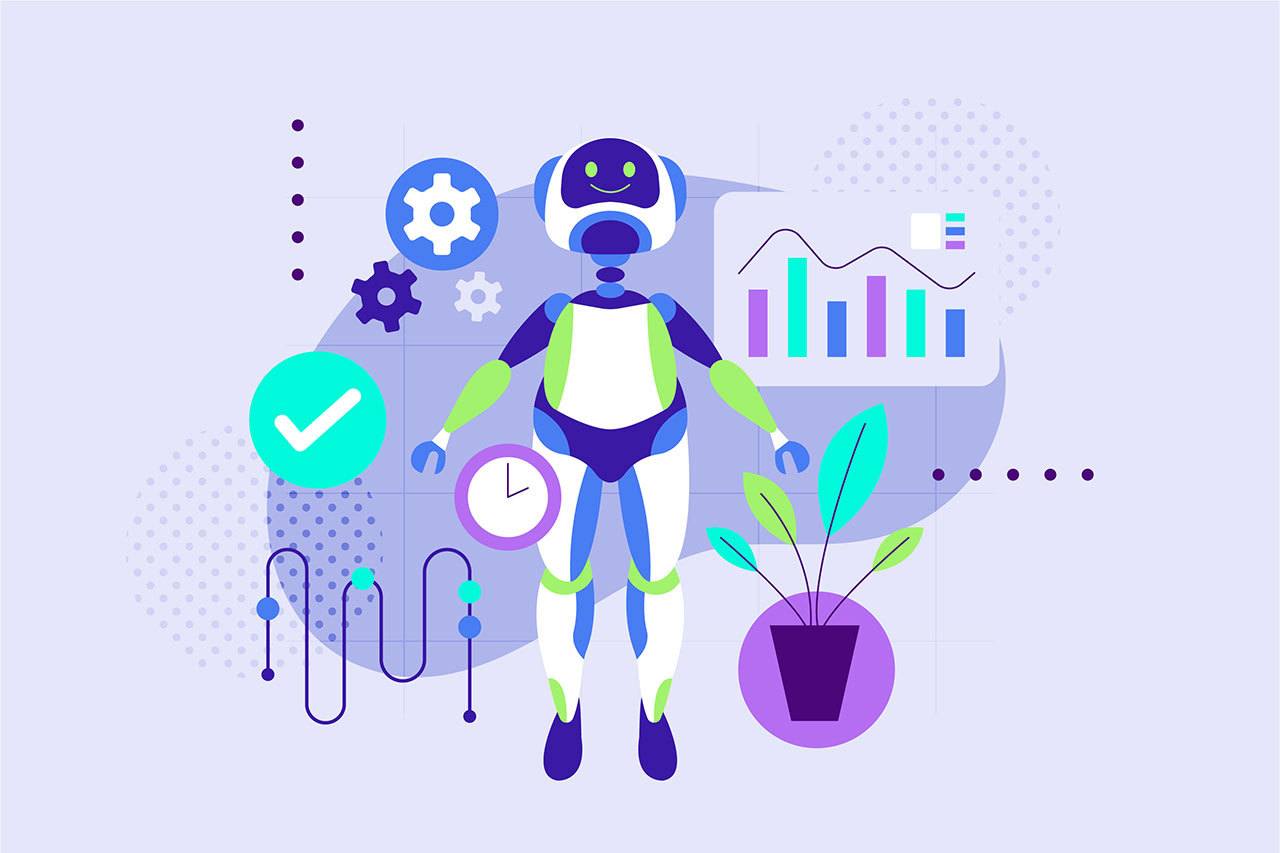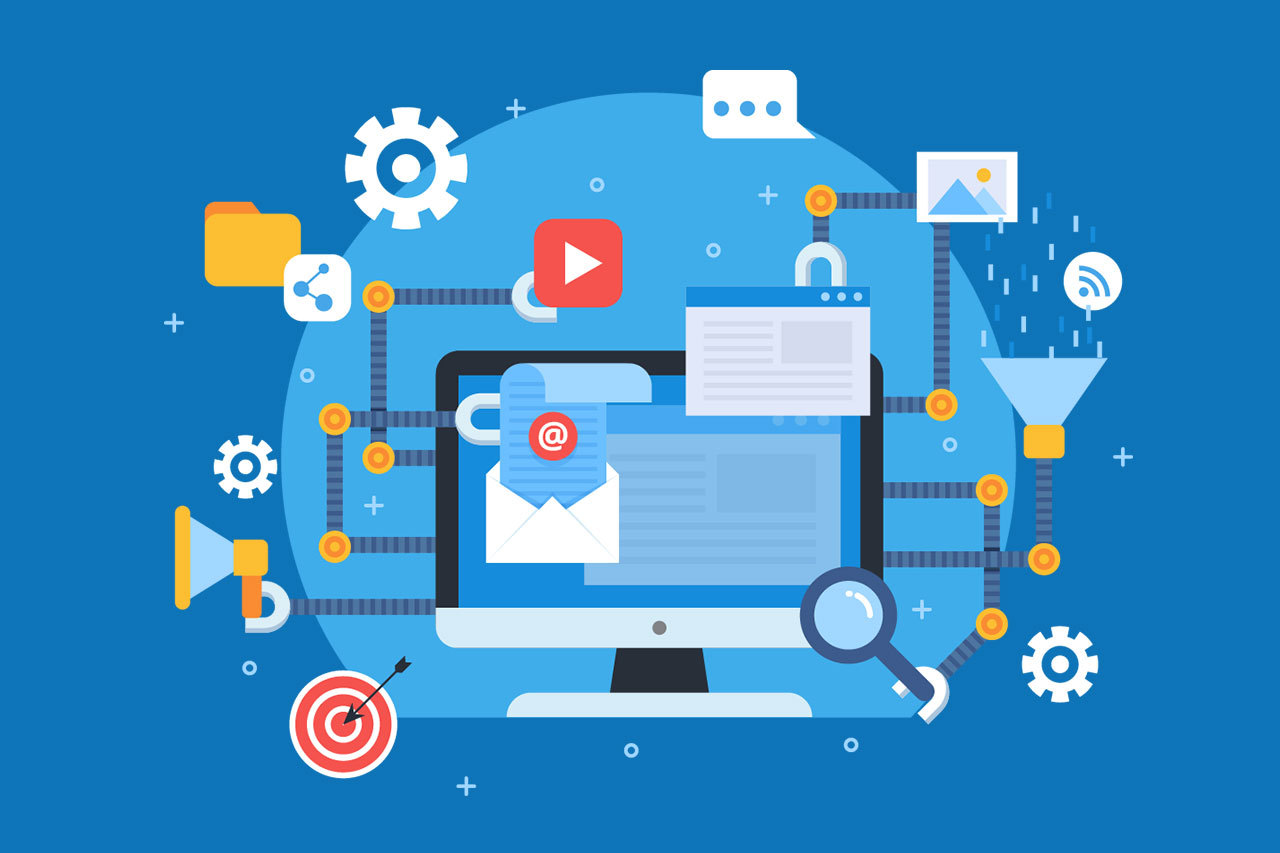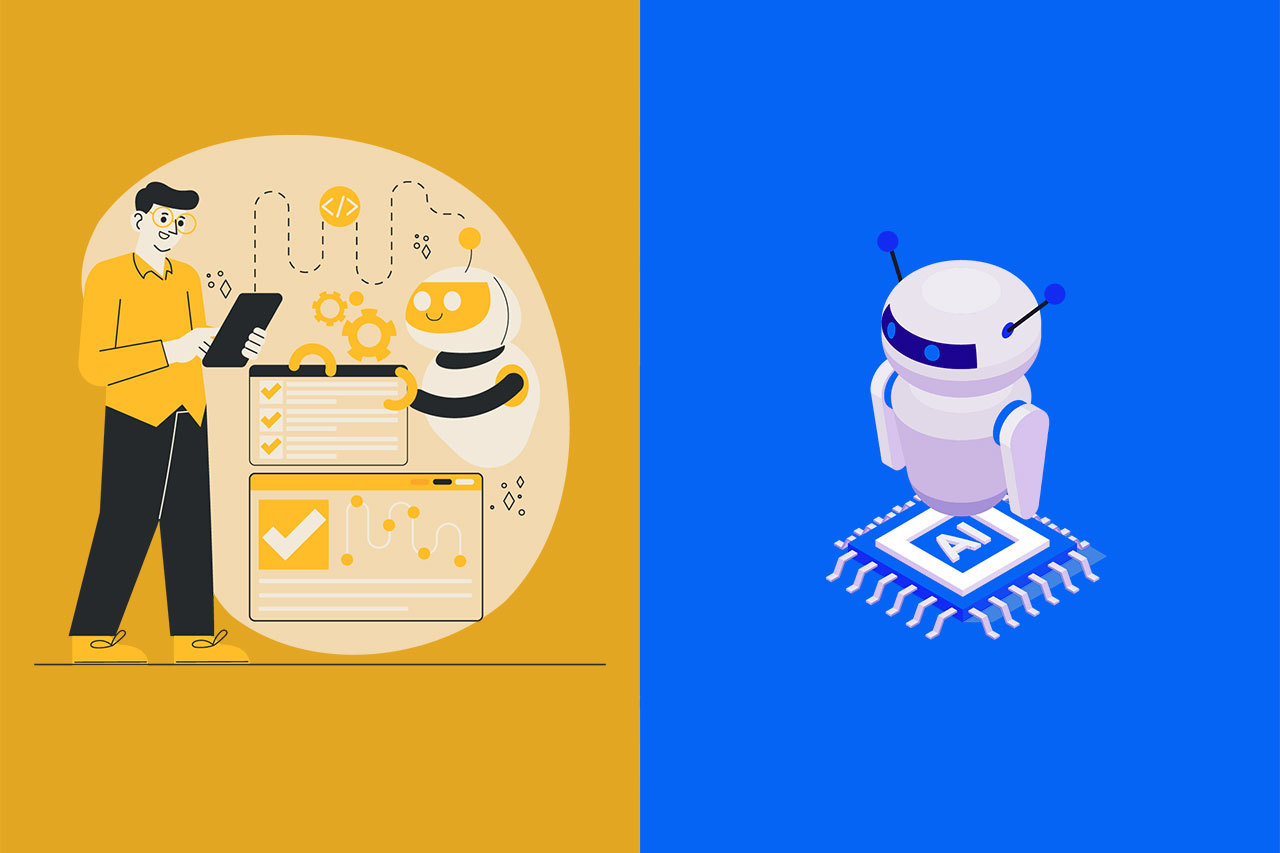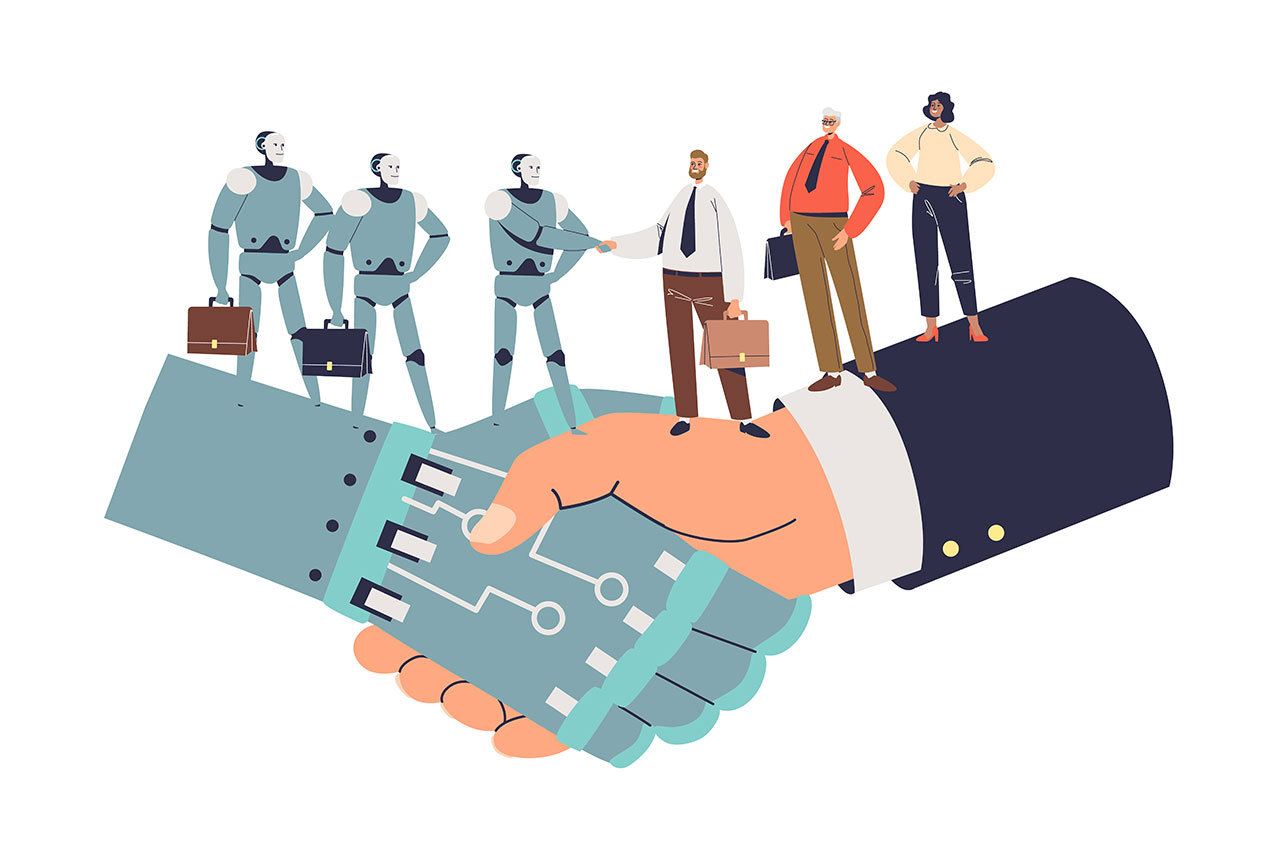Artificial Intelligence (AI) and Business Process Automation (BPA) are two buzzwords that have been making the rounds in the business world in recent times. These technologies are transforming the way businesses operate, and companies that adopt them are reaping the benefits.
AI simulates human intelligence in machines and is programmed to think and learn like humans. Business Process Automation, on the other hand, uses software to automate routine and repetitive tasks that were previously performed manually by humans. Together, AI and BPA have the potential to revolutionize business processes and make them more efficient, accurate, and cost-effective.
Implementing AI and BPA can boost a business’s goals in several ways. For instance, businesses can use AI-powered chatbots to provide customer support 24/7, automate marketing campaigns using machine learning algorithms, and improve decision-making processes through data analysis. BPA can help streamline workflows and reduce operational costs by automating routine tasks such as data entry and document processing.
In this comprehensive blog, you’ll learn how your business can use AI and business process automation software to achieve its goals. We will explore the various ways AI and BPA are employed in different industries and provide practical tips for implementing these technologies. So, whether you’re a small business owner or a corporate executive, you’ll be able to make informed decisions and take your business to the next level.
What Is AI?

AI, or artificial intelligence, is the ability of machines to perform tasks that would typically require human intelligence. OpenAI Playground and ChatGPT are examples of AI, as they are large language models that can understand and generate human-like language. These models are trained using vast amounts of data and complex algorithms to learn and improve over time. AI can be used for a variety of tasks, such as natural language processing, image recognition, and predictive analytics.
AI can help businesses make better decisions by analyzing large amounts of data and providing insights and recommendations. For example, AI-powered chatbots can provide 24/7 customer support and personalized recommendations based on customer data. You can also use AI to analyze financial data and identify trends and patterns that can inform strategic decision-making.
What is Business Process Automation?

Business Process Automation is the use of technology to automate business processes. HubSpot and Ontraport are examples of BPA tools, as they have systems that automate various business processes. HubSpot’s Marketing Hub, for example, automates email marketing, social media posting, and lead nurturing. Ontraport is CRM and Business Process Automation software designed to help businesses scale by giving them all the tools they need to sell, market, and manage their business online.
Business Process Automation software can help businesses reduce costs by automating routine tasks, freeing up employees to focus on more complex and high-value activities. It can also improve accuracy and efficiency by eliminating manual errors and streamlining workflows. By automating business processes, companies can improve ROIs, enhance customer experiences, and stay competitive in their industry.
Overall, AI and BPA are powerful technologies that can help businesses scale faster and achieve their objectives. By leveraging these technologies, your business will stay ahead of the curve in today’s rapidly evolving business landscape.
Similarities Between Artificial Intelligence and Business Process Automation

While Artificial Intelligence and Business Process Automation are distinct concepts, they share some similarities that make them complementary technologies. Here are some key similarities between the two:
- Goal-Oriented: Both AI and BPA aim to improve business performance by streamlining operations, reducing costs, and increasing efficiency. They help organizations achieve their goals and stay competitive in the market.
- Automation: AI and BPA primarily focus on automation. While BPA deals with automating repetitive, rule-based tasks, AI can automate more complex tasks that require learning, reasoning, and decision-making.
- Data-Driven: AI and BPA rely on data to function effectively. BPA systems use data to execute predefined processes, while AI systems use data to learn, adapt, and make decisions.
- Technology Integration: You can integrate these two technologies with existing systems and applications, improving their functionality and efficiency without the need for a complete overhaul.
- Scalability: Both technologies enable businesses to scale their operations easily. BPA and AI can handle increasing workloads, allowing organizations to grow without the need for significant increases in human resources.
- Continuous Improvement: Business Process Automation and Artificial Intelligence systems are designed to evolve and improve over time. BPA solutions can be refined and optimized based on performance, while AI systems learn from data and experience, becoming more intelligent and effective.
- Enhanced Decision-Making: Both BPA and AI can bring about better decision-making for your business. BPA provides real-time data and insights into business processes, while AI analyzes vast amounts of data to identify patterns, trends, and insights that can inform strategic decisions.
Despite these similarities, it is important to note that BPA and AI serve different purposes and have different capabilities. While BPA is focused on automating specific, rule-based tasks, AI goes beyond automation to provide advanced capabilities such as machine learning, and computer vision.
Differences Between AI and BPA

There are several differences between artificial intelligence (AI) and Business Process Automation (BPA). Below are some of them:
- Focus: AI focuses on intelligent automation and decision-making, while BPA focuses on optimizing business processes.
- Scope: AI is broader in scope than BPA, encompassing machine learning, natural language processing, computer vision, and more. BPA is focused specifically on process automation and optimization.
- Data-Driven vs Process-Driven: AI is driven by data and can analyze and learn from large datasets to improve decision-making. BPA is process-driven and focuses on improving and streamlining workflows.
- Technical Complexity: AI involves complex algorithms and models that require specialized expertise to develop and implement. BPA, while still quite technical, is generally less complex and can be implemented by Business Process Management Consultants.
- Implementation Approach: AI projects usually involve a Proof-of-Concept (PoC) or pilot phase, where a specific use case is tested before scaling up. Business Process Automation projects are typically implemented in stages, with incremental improvements made over time.
- Timeframe: AI projects can take longer to develop and implement than BPM projects, as they require extensive data training and algorithm development. With the help of Business Process Management Consultants, you can implement your BPA projects quickly, as it primarily focuses on streamlining already existing processes.
How to Use AI & Business Process Automation to Achieve Your Business Goals

AI and Business Process Automation can drive your major business goals in several areas. Some of these are:
1. Revenue
The primary objective of any business is to generate revenue and gradually increase it over time. Some common ways to go about this include expanding your customer base, making more sales, launching new products or services, or increasing prices. Your business can increase its revenue by using AI and Business Process Automation software to automate sales and marketing processes.
For instance, CRM software like HubSpot can automate lead generation and lead nurturing, while AI-powered chatbots can provide personalized product recommendations and answer customer queries, ultimately leading to more sales. You can also automate your invoicing process using tools like FreshBooks or QuickBooks, reducing the time spent on paperwork and helping your staff focus on generating more revenue. Additionally, predictive analytics tools like Tableau can help your business identify patterns in sales data and forecast future sales opportunities while helping you adjust your strategies accordingly.
2. Operating Costs
Another important business objective is to reduce costs and increase profitability. You’ll achieve this by making your operations more efficient, automating your processes, or outsourcing non-core activities. Business Process Automation can help you reduce costs by automating routine tasks such as data entry, invoicing, and inventory management.
For instance, you can use Business Process Automation tools like Ontraport or Zapier to automate your workflows and streamline your operations. By setting up automated workflows on these tools, you can significantly save costs that would otherwise have been spent on manual labor. AI, on the other hand, can provide insights and recommendations based on the data analyzed. For example, you can use AI-powered financial software like Mint or QuickBooks to track your expenses, identify areas where you can cut costs, and optimize your budget.
3. Customer Satisfaction
Customers are the soul of every successful business. Therefore, improving customer satisfaction should be a priority for any serious business. To get this right, you’ll need to provide high-quality products or services, offer excellent customer service, and listen to customer feedback. AI-powered chatbots can help to improve the overall customer experience by providing 24/7 customer support, answering frequently asked questions, resolving issues in real time, and offering personalized product recommendations. This can lead to higher customer satisfaction and loyalty.
Additionally, you can use Business Process Automation to improve the customer experience by automating your order fulfillment process. For example, customer relationship management (CRM) tools like HubSpot can track customer interactions and provide a 360-degree view of the customer, allowing you to tailor your messages and offerings to specific customers.
4. Brand Recognition
There’s a popular saying that “a business is as strong or as successful as its brand.” This is why you should make it a goal to continuously improve brand recognition, invest in marketing and advertising, build a strong online presence, and develop a positive brand image. Artificial Intelligence and Business Process Automation can enhance brand recognition by optimizing marketing efforts and creating a strong online presence.
For example, social media management tools like Hootsuite can automate social media posting and engagement, while SEO tools like Moz can optimize website content and improve search engine rankings. AI can also help you understand your audience and create more effective marketing campaigns. For instance, AI-powered sentiment analysis tools can analyze customer feedback and identify trends in customer sentiment, allowing you to personalize your messages to better resonate with your audience.
5. Market Share
To increase your market share, you’ll need to develop a competitive edge, expand into new markets, or acquire competitors. AI and BPA can also help with this by providing insights into customer behavior and improving operational efficiency.
For example, AI-powered customer analytics tools like Mixpanel can analyze customer behavior and identify areas for improvement, while supply chain management software like SAP Ariba can streamline procurement processes and improve supplier relationships. Business Process Automation can also help you adapt quickly to changing market conditions, keep you ahead of competitors, and gain market share.
6. Innovation
In today’s rapidly changing business landscape, innovation is essential for staying competitive. By analyzing customer feedback from social media, surveys, and reviews, you can identify pain points and unmet needs, and then, create new products that better meet the needs of your customers. AI and BPA help to birth innovation by providing insights into customer needs and identifying new opportunities.
For example, AI-powered product development tools like IBM Watson can analyze customer feedback and identify new products to meet revenue goals. With the help of Business Process Automation Software like Ontraport, you can streamline your processes, reduce waste, and improve output quality – ultimately leading to increased efficiency and innovation.
AI Tools You Should Use in Your Business

With the examples above, you’ll agree that Artificial intelligence (AI) is beneficial to businesses in many ways and opens up several new opportunities. Here are some AI tools that can improve your operations.
1. ChatGPT
ChatGPT is a natural language processing (NLP) model created by OpenAI, capable of performing NLP functions such as question answering, text production, and conversations. It uses Generative Pre-Trained Transformer 3 (GPT-3), and currently GPT-4, one of the most advanced autoregressive language models, to produce human-like text. The model was trained on a vast dataset, making it highly capable of comprehending human language and generating meaningful answers.
Features
- Question-answering
- Conversation
- Text generation
Pros
- High accuracy
- Large training data
- Advanced Natural Language Processing
Cons
- Ethical concerns: Like other AI language models, it may inadvertently reflect or perpetuate existing biases in the text data it was trained on. This can result in responses that are politically biased, offensive, or otherwise inappropriate.
2. Jasper.ai
Jasper is a sophisticated AI marketing platform designed to generate high-quality ad copy, emails, landing pages, articles, and social media posts. To create human-like text, this program uses the GPT3-model created by OpenAI. It also includes templates for AIDA, Feature to Benefit, PAS, and the Before-After-Bridge Framework. All you have to do is enter your brand or product name, and it will produce the right copy for you.
Features
- Text optimization
- Integration with other apps
- Grammar, tone, and plagiarism checker
- Idea recommendation
Pros
- Flexible pricing
- Excellent copywriting tool
- Great support
- Easy-to-use
Cons
- Needs fact-checking
- Cases of words repetition
3. Optimove
Optimove is a customer data tool with AI-powered marketing features. It helps in gathering data from multiple platforms or sources to provide a unified view of all the information on a single dashboard. With this tool, you can quickly evaluate or share information, and decide on marketing strategies. Optibot, its native Artificial Intelligence bot, scours and analyzes all customer data received to generate actionable insights.
Features
- Lead management
- Email marketing
- Campaign management
- Reporting and analytics
- Campaign management
Pros
- Excellent customer behavior analysis
- Integration with other apps
- Easy to use
- Great customer support
Cons
- Takes time to sync
- Somewhat slow system
Parting Words
AI and BPA present exciting opportunities for businesses to improve efficiency, reduce costs, and enhance customer experiences. By identifying areas of your business that can benefit from these technologies, you can leverage the right AI or BPA software to create a sustainable, productive, and efficient business process.
Bottom line: Don’t let outdated systems slow you down! Embrace the power of BPA and AI to unlock your organization’s full potential. Hire our seasoned Business Process Management Consultants to guide you in setting up and implementing BPA for your business. We’ll analyze your existing workflows, identify opportunities for automation, and create customized solutions tailored to your unique needs.


